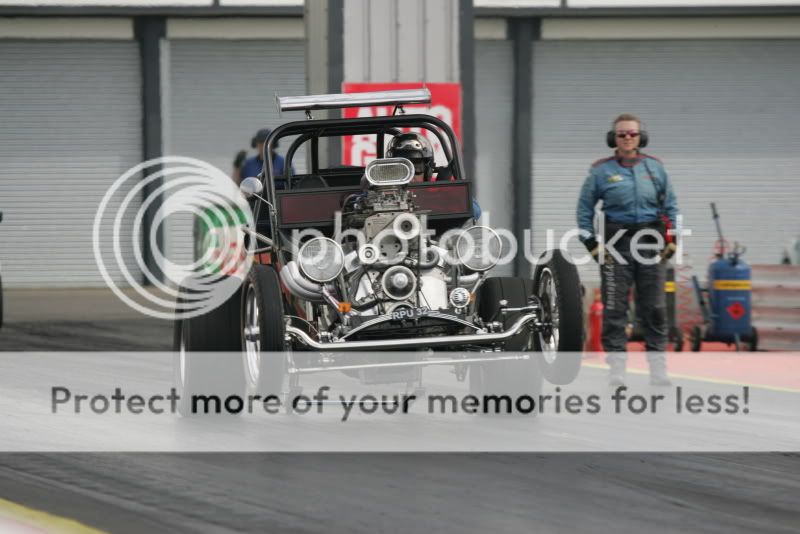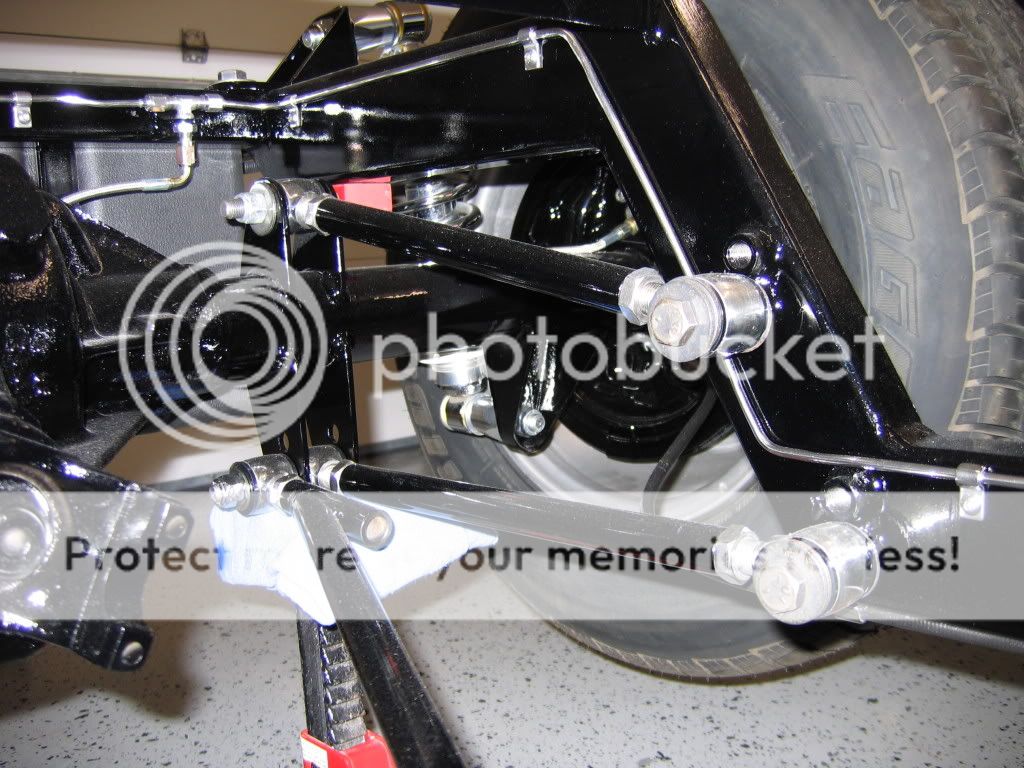You are using an out of date browser. It may not display this or other websites correctly.
You should upgrade or use an alternative browser.
You should upgrade or use an alternative browser.
How would you get a T to "hook up"
- Thread starter 2old2fast
- Start date
Francis Blake
Active Member
Even big street tires won't do it. At the drags even with slicks I see them use bleach to make the tires hook up better.
That car you have Francis, used to hook a lot better when it had Firestone race tires on it. They wore out pretty quick on the street.Even big street tires won't do it. At the drags even with slicks I see them use bleach to make the tires hook up better.
2old2fast
Active Member
From looking at 4-links[for drag racing] versus ladder bars / lift bars/ radius rods , it appears that they all do basically the same thing... transfer the rotational energy applied to the rear axle into lifting the chassis thereby transferring weight to the rear tires. So , other than adjustability , what makes 4-bars superior ?? And yeah , slicks would be an advantage , but not terribly practical for the street.
dave
dave
Screaming Metal
Active Member
Well, theres a bunch of folks that will argue 14 diff. ways from sunday on how to get a car to hook up. We don't use bleach too much anymore these days, we have stuff such as 'Moose Juice' and other traction additives that we can put on the tires.
Only thing with a 4 link on a short driveshafted car like a T or a Altered, your moving your axle up and down, with the pinion horizonal to the ground. With hairpins or ladder bars, the axle moves in a arc, to the trans. Both have their advantages and disadvantages. Pinion angle preload really comes into play here....
Ted is a Master at getting cars to hook up, I see his stuff do some unbelieveable things off the line.
To get something like a T to hook up, Gotta have the right springs so the rear suspension can squat and load, Sticky tire compound to help bite, the shocks need to keep from 'unloading' the rear suspension, your air pressure has to be such as to allow a full bite, and alot of torque to keep it a steady pull.
Altereds, if you get them to heavy hard and straight, after the 1600 horses of blown Hemi are thrown in the mix, usually after the 60' mark, the cars all over the track with the tires spinning some.
Now, you can setup a little spin off the line,(This is where the Wheelie Bars come in) letting the suspension and tires 'bite' the track, once the bite occures, the motors usually humpin' in the 6500-7000 rpm range, before the trans goes into high....We have ALOT of adjustability in the clutches....
But for a T, The suspension biting and the Convertor slipping a little with alot of torque, tire pressure leaving a even pattern, all those things have gotta happen for the car to hook up. Every car will be different....
Only thing with a 4 link on a short driveshafted car like a T or a Altered, your moving your axle up and down, with the pinion horizonal to the ground. With hairpins or ladder bars, the axle moves in a arc, to the trans. Both have their advantages and disadvantages. Pinion angle preload really comes into play here....
Ted is a Master at getting cars to hook up, I see his stuff do some unbelieveable things off the line.
To get something like a T to hook up, Gotta have the right springs so the rear suspension can squat and load, Sticky tire compound to help bite, the shocks need to keep from 'unloading' the rear suspension, your air pressure has to be such as to allow a full bite, and alot of torque to keep it a steady pull.
Altereds, if you get them to heavy hard and straight, after the 1600 horses of blown Hemi are thrown in the mix, usually after the 60' mark, the cars all over the track with the tires spinning some.
Now, you can setup a little spin off the line,(This is where the Wheelie Bars come in) letting the suspension and tires 'bite' the track, once the bite occures, the motors usually humpin' in the 6500-7000 rpm range, before the trans goes into high....We have ALOT of adjustability in the clutches....
But for a T, The suspension biting and the Convertor slipping a little with alot of torque, tire pressure leaving a even pattern, all those things have gotta happen for the car to hook up. Every car will be different....
Joe-405
Member
4-link kits are more adjustable. I am running ladder bars on my car as it will hook on a 12" wheel with a 315 radial. Alot of my engineering was from the help of Andy Fadster which has alot of pics on here but hes not on here lately. He did note that the radials wont hook unless the dragstrip is prepped properly.
His Mad as a Hatter T runs mid 8 second passes at over 140mph on ladder bars on the same setup i have but with a bigger engine.
Here is a pic of his T off the internet..................

This is him on 315 radials and obdviously it hooked well this pass !...............................

His Mad as a Hatter T runs mid 8 second passes at over 140mph on ladder bars on the same setup i have but with a bigger engine.
Here is a pic of his T off the internet..................

This is him on 315 radials and obdviously it hooked well this pass !...............................

EX JUNK
Moderator
I am using some old drag racing technology. It is called an "adjustable four link". It is, in effect, an adjustable traction bar. It allows me to set up my car so that it launches with minimal tire spin and in a virtual straight line. It also has a "wishbone" type locator for the rear end rather than a panard bar so that the rear travel in a perfectly vertical path rather than a parallelogram path as with a panard bar.


Screaming Metal
Active Member
And yeah , slicks would be an advantage , but not terribly practical for the street.
They have grooved, DOT Approved Slicks now. Even Radial Drag Slicks. The best biting tires, in my opinion, are the soft compound wide Hoosiers, but theres alot of wear on the streets. The Medium compound seems to be a good compromise....
They have grooved, DOT Approved Slicks now. Even Radial Drag Slicks. The best biting tires, in my opinion, are the soft compound wide Hoosiers, but theres alot of wear on the streets. The Medium compound seems to be a good compromise....
one finger john
Active Member
Jim, after looking at your rear suspension I noticed that, in a way, you have little adjustability. Other than lengthening or shortening the the parallel bars, you don't have the many possible mount points that are seen on other drag cars. Same could be said for suspension mount points for circle track cars.
Infinite adjustability but with the possibility of getting lost in the mix.
How did you determine the present rear mount points and basically "lock" them in with certainty without resorting to the "many mount point" train of thought?
OR, howd ya know where to put 'em?
John
Infinite adjustability but with the possibility of getting lost in the mix.
How did you determine the present rear mount points and basically "lock" them in with certainty without resorting to the "many mount point" train of thought?
OR, howd ya know where to put 'em?
John
EX JUNK
Moderator
Jim, after looking at your rear suspension I noticed that, in a way, you have little adjustability. Other than lengthening or shortening the the parallel bars, you don't have the many possible mount points that are seen on other drag cars. Same could be said for suspension mount points for circle track cars.
Infinite adjustability but with the possibility of getting lost in the mix.
How did you determine the present rear mount points and basically "lock" them in with certainty without resorting to the "many mount point" train of thought?
OR, howd ya know where to put 'em?
John
John, what you say is true in that I only have eight possible settings but it is not a race car and does not need the fine tuning. I feel that a little is better than none at all.
Jim
Francis Blake
Active Member
Ron I have been told I drive that car like a grandpa (I am) so hook up is not a problem for me, but I have a lot of fun anyway.
one finger john
Active Member
No doubt. But again I ask, without being too insistent or pushy, how did you arrive at the final mount points for the rear suspension? Is there a formulae? Another builder here said that he put the mounts where they looked the best (???). Has to be some science involved.John, what you say is true in that I only have eight possible settings but it is not a race car and does not need the fine tuning. I feel that a little is better than none at all.
Jim
Screamin' Metal, can you hep me out hea'?
John
EX JUNK
Moderator
No doubt. But again I ask, without being too insistent or pushy, how did you arrive at the final mount points for the rear suspension? Is there a formulae? Another builder here said that he put the mounts where they looked the best (???). Has to be some science involved.
Screamin' Metal, can you hep me out hea'?
John
No science involved with mine, John. As you can see, there is very little room to place the forward mounts anywhere else except where they are. The friend that helped me on the chassis has built drag cars and "roundy-roundy" cars and he felt that it should work for a street car. So far it has worked quite well and I'm very satisfied.
Jim
Go to WWW.cachassisworks.com you can spend days there studying how to make it hook
old round fart
Well-Known Member
Mine hooked up great! Push the motor back and the front wheels forward, put on some big tires and HOLD ON!



On these light weight T's, the instant center is usually at the crank's center line, the center of gravity is probably near the flywheel. You can put your car on scales etc. etc. and figure it out. That's what is good about the adjustable 4 link, you can adjust it for different track in a matter of a minute. I saw a diagram before that showed the upper and lower link bars "aimed" at "A". the line from the tire patch to the instant center.
This is what I was looking for...
http://www.how-to-build-hotrods.com/tuning-4-link.html
http://www.how-to-build-hotrods.com/tuning-4-link.html
Similar threads
- Replies
- 22
- Views
- 4K
- Replies
- 16
- Views
- 1K
- Replies
- 175
- Views
- 23K
- Replies
- 31
- Views
- 3K




